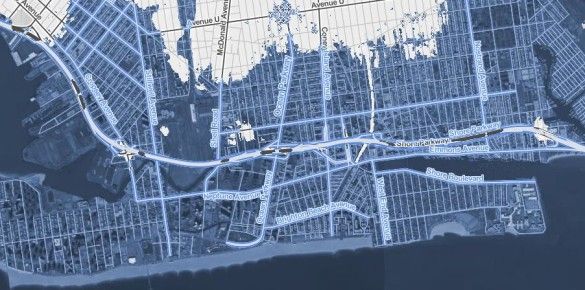Feds To Launch Storm-Surge Warning Maps To Remind You How Screwed You Are

The National Oceanic and Atmosphere Administration (NOAA), the federal government’s weather sleuths, will soon launch storm surge warning maps to help highlight the specific areas vulnerable to flooding in advance of individual storm surges, U.S. Senator Charles Schumer announced yesterday.
Schumer’s office explains in a press release:
[B]eginning with the 2014 Atlantic hurricane season, NOAA’s National Hurricane Center (NHC) will issue the Potential Storm Surge Flooding Map for areas along the Gulf and Atlantic coasts at risk of storm surge from a tropical cyclone. According to NOAA, the maps will highlight geographical areas where inundation from storm surge could occur and how high above ground the water could reach in those areas. The maps will show inundation levels that have a ten percent chance of being exceeded and can therefore be thought of as representing a reasonable worst-case scenario.Schumer had urged the creation of the maps – similar to those already made for tropical storms, hurricanes and tornadoes – in order to help convey surge predictions to local governments and emergency managers in advance of an expected storm.
Although the senator’s office said the maps were now available on NOAA’s website, we couldn’t find them. That might be because there’s no imminent threat of a storm surge, or because NOAA’s website is, itself, a haggard vortex of impenetrable jargon.
Fortunately, since we’re sure you clicked this link to look at maps that illustrate just how screwed you are in future storm surges, other people have made those. Like this one. Look at how screwed you are. Quite screwed.
(Note: We removed the embedded map because it sucks, but you can see how screwed you are – interactively – here.)




